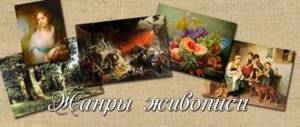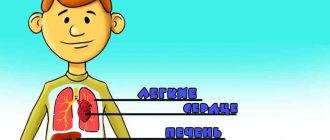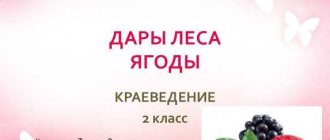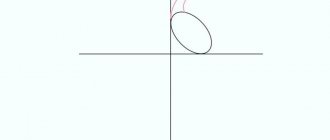so UNT / Fine arts / Lesson plans for fine arts 2nd grade
Lesson 19 Topic: IMAGE OF A FAIRY-TALE HERO. ARTISTIC IMAGE IN VOLUME
15.11.2013 19641 0
Type of occupation:
image in the volume of fairy-tale characters (modeling).
Goals and objectives:
acquaintance with sculpture, with the work of a sculptor (work in plasticine, clay - plaster model
-
work in materials: stone, metal, cement, etc.); developing the ability to work with plasticine, the ability to capture and convey proportions, relationships, plasticity of the human body in volume, to find coordination points (support, key) figures; mastering the approximate ratio of masses of body parts; development of imaginative vision, the ability to look at sculpture from different points of view, to combine details into one whole; nurturing emotional responsiveness to works of fine art; development of a creative mindset, imagination, associative thinking.
Lesson equipment: for students - stacks, plasticine, boards for figures, oilcloth, newspapers, rags, wire for the frame, souvenirs; for the teacher it’s the same.
Visual range: finished works of children; souvenirs, dolls; methodological tables; photographs of sculpture, including antique (works of ancient Greek sculptors); slides of sculptural images of works by S. Konenkov, A. Golubkina, ceramics by M. Vrubel, medieval European sculpture.
During the classes
I. _
Class organization.
Checking absences and readiness for class. P. Conversation on the topic of the lesson.
The Image Wizard works not only on a plane. An artistic image in volume is also an expression of the artist’s feelings and thoughts.
After asking children about the sculptural images they know, we need to talk about monuments that glorify such human qualities as courage, wisdom, and love for people.
Reference. Modeling
- the process of creating a sculptural image from a soft plastic material by
adding
material to the original volume, compacting it, stretching it, flattening it, smoothing it out, etc. Modeling materials - clay and plasticine.
Sculpture
As an art form, it got its name from the Latin word “sculpo”, meaning “to cut”, “to carve”.
Sculpture actually
exists in volume in real space, unlike painting and graphics.
A sculpture visible from all sides is called round.
Plastic enrichment of a large plane (the wall of a building, for example) is carried out by flattened sculpture - relief.
Depending on the degree of flattening, two main types of relief arose: high (high relief) and low (bas-relief).
High relief
— the image protrudes above the background by more than 1/2 of its volume, which allows you to convey the depth of space.
Bas-relief
— the image protrudes above the background by no more than 1/2 of its thickness, which creates a flattening of the volume. Therefore, bas-relief is often used to decorate architectural structures and in decorative and applied arts. In bas-relief, line plays a significant role, which allows us to consider low relief as an intermediate link between sculpture and graphics (remember the bas-reliefs of Ancient Egypt).
The content of the sculpture is varied. Her genres are: portrait, everyday life, monumental, historical-revolutionary, animalistic, small plastic art.
By appointment it happens:
— monumental
sculpture (monuments, usually in urban, park environments, on pedestals; its special genre is
memorial
sculpture (tombstones
— decorative
sculpture is mainly of an applied nature, decorating architectural structures (reliefs, decorative ornaments, etc.);
— easel
sculpture (
small
is one of its types).
With the help of posters and sketches on the blackboard, the teacher explains the sequence of movements of the arms, legs, torso, and the entire human figure during walking, running, and sports activities. By comparing these poses, students quickly understand the dynamics of the movement of the human figure and the spatial relationship of its parts. For credibility, you can demonstrate reproductions of paintings by artists depicting athletes (A. Deineka, Zhilinsky and others).
Construction of a figure based on the skeleton and generalized muscle masses,
front view, A - exterior, B —
skeleton:
1 - zygomatic arch, 2 - mastoid process, 3 - angle of the lower jaw, 4 - cervical vertebrae, 5 - jugular cavity, 6 - clavicle, 7 - acrom, 8 - head of the humerus, 9 - scapula, 10 - humerus, 11 - external epicondyle of the shoulder, 12 - internal epicondyle of the shoulder, 13 - body of the radius, 14 - ulna, 15 - lower end of the radius, 16 - head of the ulna, 17 - wrist, 18 - metacarpal bones, 19 - head of the metacarpal bones, 20 - phalanges of the fingers, 21 - iliac crest, 22 - anterior superior iliac spine, 23 - anterior inferior iliac spine, 24 - greater trochanter, 25 - femur, 26 - patella, 27 - external femoral condyle, 28 - knee joint gap, 29 - external condyle of the tibia, 30 - head of the fibula, 31 - fibula, 32 - tibia, 33 - external malleolus, 34 - phalanges of the fingers, 35 - heads of the metatarsal bones, 36 - metatarsal bones, 37 - calcaneal tubercle, 38 - talus, 39 - internal malleolus, 40 - internal condyle of the tibia, 41 - internal condyle of the femur, 42 - ischial tuberosity, 43 - pubic fusion, 44 - sacrum, 45 - epigastric angle, 46 - ribs, 47 - xiphoid process of the sternum, 48 - angle of the scapula, 49 - body of the sternum, 50 - manubrium of the sternum, 51 - olecranon process of the bone, 52 - mental eminence.
Proportions of the human figure - according to the methodological table. Story.
About the work of the sculptor, the technology of his work on the sculpture
(plan - sketch in plasticine, clay - plaster model -> work in material: stone, metal, cement, wood). If the sculpture is large, the sculptor uses a frame made of metal wire, sticks and sticks; the frame in the sculpture acts as a skeleton, supporting points.
— What sculptural monuments of our city do you know? Where are they installed? (Children’s answers and teacher’s generalization.)
III.
Working on a task.
We invite children to depict specific male and female fairy-tale images in volume - making a sculpture. Let's create three-dimensional images with a pronounced character: the Swan Princess, Baba Babarikha, Baba Yaga, Bogatyr, Koschey the Immortal, etc. In an additional lesson, children sculpt contrasting images with the ones they sculpted in the previous lesson.
The work is done individually.
You can do the work using a blank figure,
which the teacher and students perform sequentially together.
Modeling stages:
1) Make a low plinth on a stand board (a stand for the future figure).
2) Take several pieces of plasticine (preferably not greasy, which holds its shape and does not float) of a dark color. To do this, mix all the colors at home in advance to a uniform gray.
3) Roll into a “sausage”, separate 1/7 of it. This is the head. Sculpt it into an egg shape.
4) Sculpt a cylindrical neck from a small piece and connect it to the head (bottom).
5) Divide the remaining plasticine into two parts: the torso and limbs. Lightly crush the body at the waist, treat the joints with water, and connect the body to the head and neck. The figure of women is wider at the hips, and men are wider at the shoulders, so we give the figure a silhouette according to the plan. Smooth out the shoulder girdle.
6) Divide the remainder into two parts (one larger): the smaller part is the arms, the larger part is the legs.
7) Divide the larger piece into two parts again, stretch out the two legs, keeping in mind the relationships of the human body, form the knees,
round the feet (bending them forward), attaching them to the body (from below, not from the side).
 Divide a smaller piece of plasticine into two parts, form arms, attach to the body (side), make palms by flattening the plasticine, separate the thumb with a stack, round the palms, attach.
Divide a smaller piece of plasticine into two parts, form arms, attach to the body (side), make palms by flattening the plasticine, separate the thumb with a stack, round the palms, attach.
9) Complete the image with the necessary details of clothing and appearance.
10) Install using sticks, matches, or another frame on the plinth. The total height of the model is 10-12 cm.
11) Show the figure in motion. For example, move her arms forward, slightly bending her torso and legs; take one leg back and push the other forward; According to the movement of the hands, spread the legs and tilt the torso forward, trying to emphasize the effort exerted by the figure.
IV. Lesson summary.
Express View. Analysis of common errors. Showcase successful work.
Give grades immediately, as work taken home by children may be damaged. Cleaning workplaces.
Homework.





